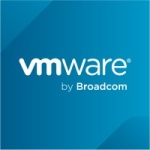We use AWS CloudFormation for any migration tasks, such as service catalog services, Amazon EC2 instances, and load balancers.
The solution can be deployed on-premise, such as in data centers, and on the cloud, such as VPNs and gateways.
The most valuable features of AWS CloudFormation are all the resources documentation is located in one location, simple resource reverting, and ease of use of the full package for new users.
The conditions that can be added in AWS CloudFormation are not as powerful as any programming language.
I have been using AWS CloudFormation for approximately four years.
The solution has been working well.
We have approximately three people using the solutions.
My clients have used AWS CloudFormation support.
I have used Terraform and it has similar benefits as AWS CloudFormation. We are using AWS CloudFormation mainly because all of the other services we use are from Amazon AWS.
We had a vendor that set up the solution for our company.
If you compared serverless and container-based, serverless is less expensive. If you use certain instances the price can increase and become too expensive.
I rate AWS CloudFormation a seven out of ten.
















